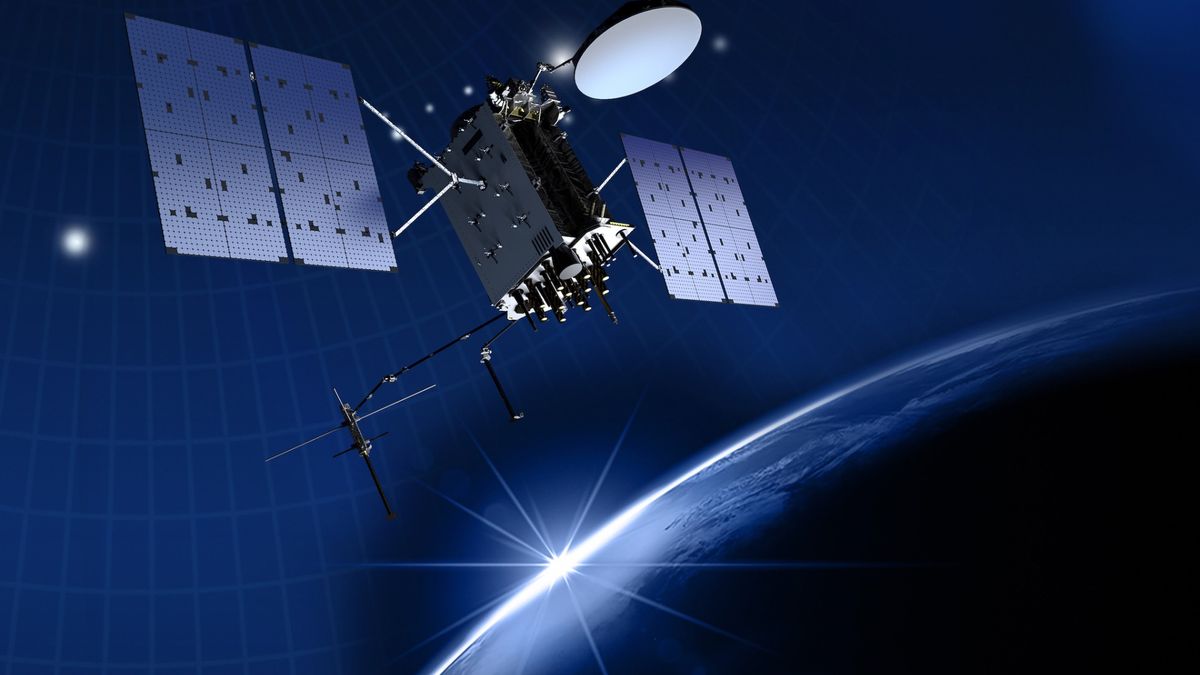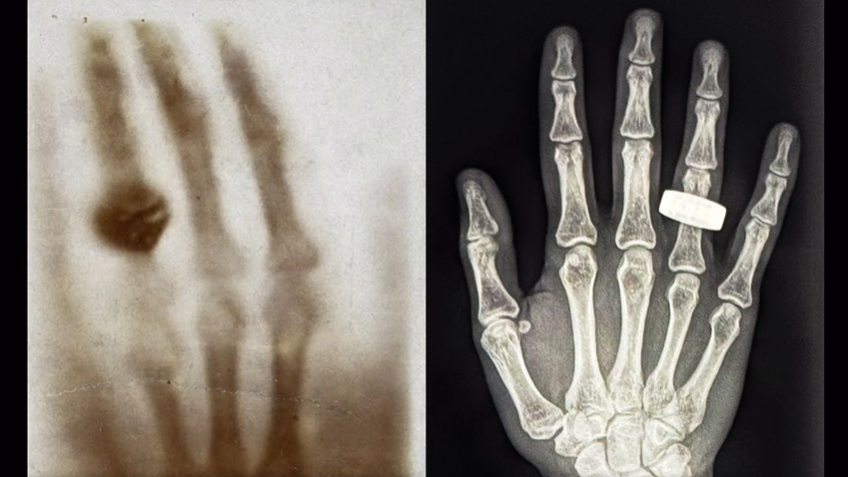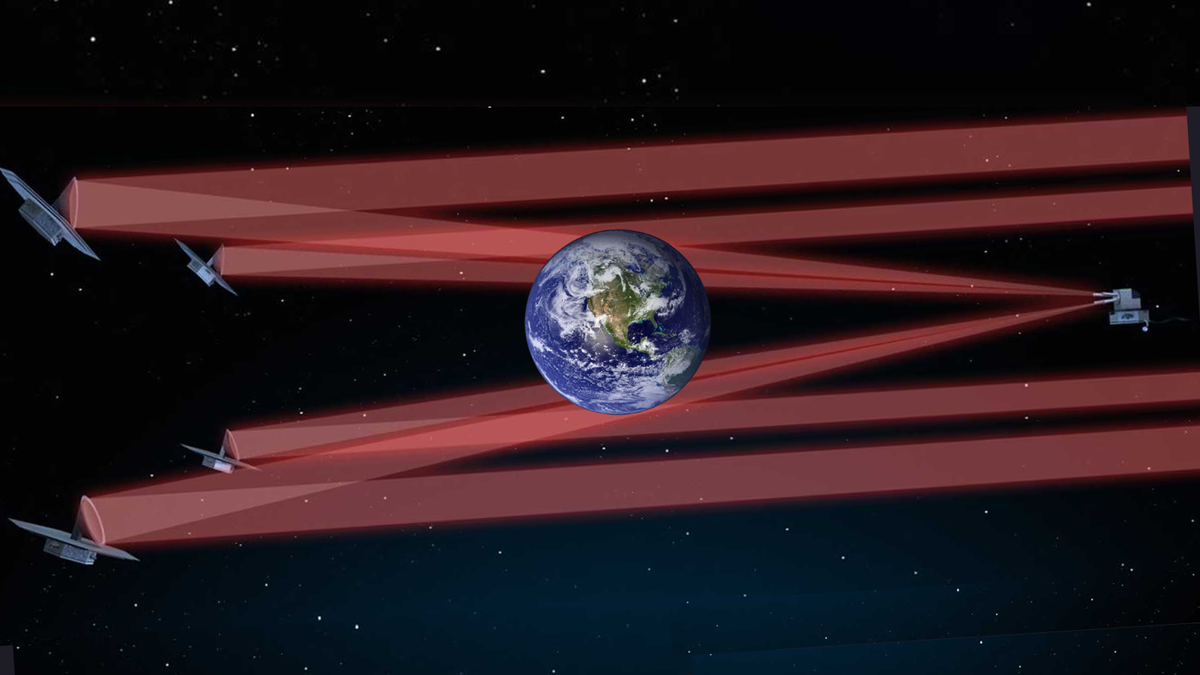From satellite TV broadcast hijacking to jamming and spoofing of satellite navigation systems, attacks on space-based services are on the rise. Experts are racing to find solutions to keep the onslaught in check.
On Dec. 25 of last year, an Azerbaijani plane headed for the Chechnyan capital Grozny crash-landed in Kazakhstan after flying into a GPS jamming bubble. Later reports claimed that the plane had been hit by Russian shrapnel targeting Ukrainian drones, but the aircraft had already been struggling before the hit, having flown into a cloud of thick fog while losing satellite positioning data.
According to Clémence Poirier, a cybersecurity researcher at ETH Zurich in Switzerland, the incident, which killed 38 people, is just the tip of an increasingly frightening iceberg. Some 310,000 flights were affected by GPS interference in 2024, with most cases taking place around Russia and the Middle East. For example, civilian flights to Estonia's Tartu Airport were suspended for months in 2024 because approaching aircraft couldn't safely land due to GPS interference.
The situation prompted the United Nations' International Civil Aviation Organization (ICAO) to issue a statement on March 25 calling for states to "urgently enhance their protection" of critical frequency bands to prevent disruptions in "aviation, maritime and telecommunication services."
Related: How Russia's GPS satellite signal jamming works, and what we can do about it
"Radio navigation satellite service interference can impact aircraft operations far beyond the immediate affected area, creating potential safety risks across multiple flight regions," ICAO Secretary General Juan Carlos Salazar said in the statement. "ICAO is fully committed to working closely with member states to implement these protective measures through existing aviation safety frameworks and standards."
The International Telecommunication Union (ITU) and the U.N. International Maritime Organization (IMO) joined the call.
Poirer told Space.com that satellite navigation is not the only space-based service vulnerable to disruption. In April 2024, Russian hackers hijacked the Walt Disney BabyTV channel, which was broadcast across Europe via geostationary satellites of the French satcom provider Eutelsat. Instead of its usual jolly cartoons, the channel began broadcasting footage of Russian military parades accompanied by music of the Russian nationalist singer Oleg Gazmanov. Multiple satellite TV channels in Ukraine also got hacked.
Since then, eight European countries, including Estonia, Latvia, Lithuania, Poland, Ukraine, Finland and France, filed complaints to the ITU against Russia's interference with European satellite communications systems.
According to Porier, satellite operators will have to up their game to secure their services, which for years they considered inherently safe.
"Before the war in Ukraine started, companies didn't put too many resources into protection against electronic interference," Poirer told Space.com. "There wasn't too much research on the topic."
GPS ubiquitous
Services provided by the U.S. Global Positioning System (GPS) and other global navigation satellite systems have, in particular, been taken for granted. Their precise location and timing signals underpin much more of today's everyday technologies than just your Google maps navigation. They also synchronize banking operations all over the world, guide oil-drilling heads at offshore rigs and assist with power grid management, for example.
"The world has all been based on GPS," Mario Paniccia, CEO of California-based ANELLO Photonics, told Space.com. "But what happens when you lose it? How do you navigate?"
ANELLO Photonics is among a flurry of companies that have emerged in recent years, trying to find cost-effective and speedy solutions to the GPS vulnerability problem.
ANELLO's idea is a chip-based inertial navigation system that can augment a GPS navigation unit and take over when the satellite signal is jammed or spoofed (that is, altered by a cyber attacker to mislead the user.)
"The military has had these systems for a long time, but they are very high-end, very costly and large," Paniccia said. "An inertial navigation system for a military submarine can cost a couple million dollars and be the size of your desk."
ANELLO managed to produce an inertial navigation system that is accurate enough and so small that it fits on a chip. The system's software uses input from lasers and accelerometers to calculate the path travelled from a starting point or detect deviations from GPS data to alert to spoofing.
In tests with land vehicles, ANELLO covered a 60-mile (100 kilometers) track, reaching its destination with an error of only 330 feet (100 meters).
Other GPS backups rely on low-frequency radio waves, such as the eLoran system developed by the U.S. Navy, or fleets of satellites in low Earth orbit that offer a stronger signal then the traditional GNSS systems that operate much higher up, at around 12,000 miles (20,000 km) above Earth's surface. Defense tech innovators have also increasingly begun fitting drones with AI-based navigation technology that can follow a path by comparing landmarks spotted in the landscape below with onboard satellite images and maps.
Related: GPS: Everything you need to know about the space-based technology keeping us on track
Comms disruption
Operators of telecommunication satellites, too, need to pay more attention to the security of their signals. Military and governmental telecom satellites have long been protected by encryption and special waveforms that are resistant to jamming and interception. But the BabyTV hacking shows that even harmless TV programs are at risk of being targeted.
"Operators and broadcasters can use spectrum monitoring to detect and locate interference," said Poirer. "In the satellite manufacturing process, directional antennas, phased array antennas or hardened components can be integrated."
In a report released last year, the aviation professionals organization OPS Group estimated that incidents of GPS spoofing affecting aviation had increased by 400% over the previous three years, with up to 1,350 flights affected per day in 2024 compared to the daily average of 200 in 2021. Statistical data on disruption of satellite services in other sectors are hard to find, but experts seem to agree that things are bound to get worse.
The stakes are high. A 2023 report by the U.K. Space Agency estimated that a seven-day GNSS disruption affecting the country would cost the nation's economy some £7.6 billion (around $9.8 billion US at current exchange rates), affecting sectors including maritime and aviation, road transportation, agriculture, energy and finance.
.png)
 German (DE)
German (DE)  English (US)
English (US)  Spanish (ES)
Spanish (ES)  French (FR)
French (FR)  Hindi (IN)
Hindi (IN)  Italian (IT)
Italian (IT)  Russian (RU)
Russian (RU) 









Comments